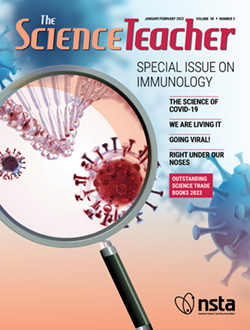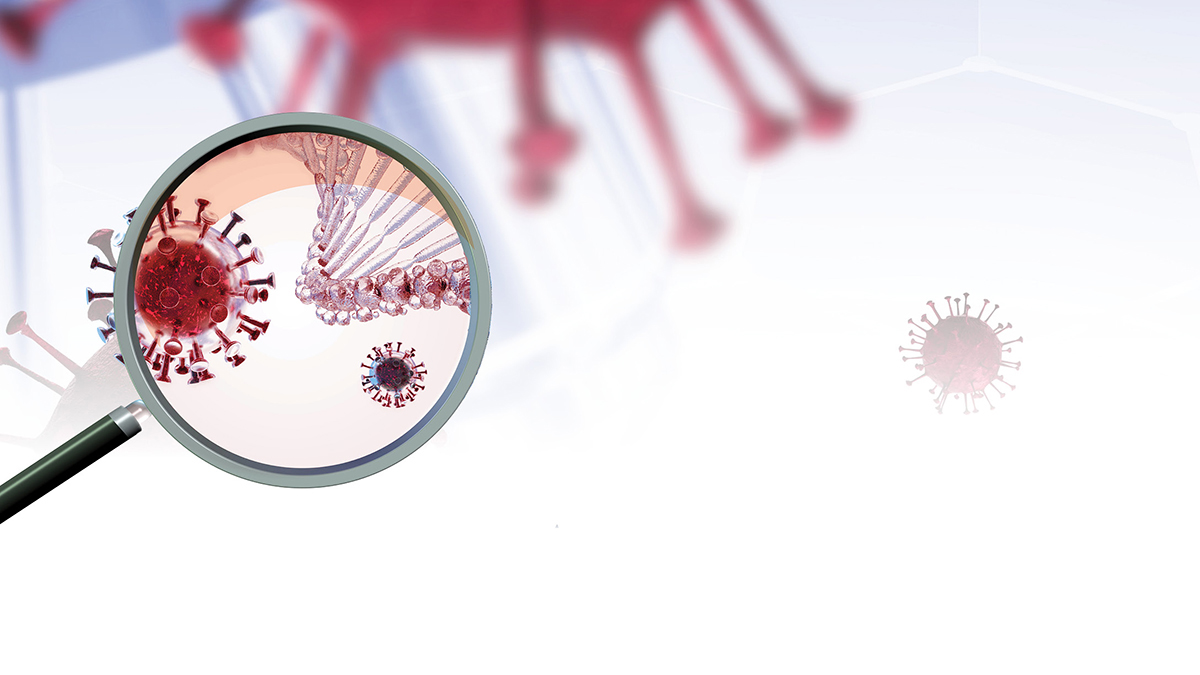
Special Issue on Immunology
Guest Editors: Colby Tofel-Grehl and Brooke A.

Special Issue on Immunology
Guest Editors: Colby Tofel-Grehl and Brooke A.

Special Issue on Immunology
Guest Editors: Colby Tofel-Grehl and Brooke A.
special issue
Immersive Learning Through Experiential Inquiry of a Virtual Epidemic
The Curricular Unit of SPIKEY-20
The Science Teacher—January/February 2023 (Volume 90, Issue 3)
By Tyler Hansen, Deborah Fields, Amanda Strawhacker, and Yasmin Kafaiy

Freebies and Opportunities for Science and STEM Teachers, January 17, 2022
By Debra Shapiro

special issue
Going Viral!
A Hands-on Science Kit Examining Viruses, Bacteria, Vaccines, and the Immune System
The Science Teacher—January/February 2023 (Volume 90, Issue 3)
By Delaney Worthington, Andrew Warnock, Mike Viney, Victoria Jordan, Jennifer Mclean, Karina Hassell, Lynne Judish, and Courtney Butler

special issue
We Are Living It
Learning About Infectious Disease Transmission Through a COVID-19 and Health Equity Unit
The Science Teacher—January/February 2023 (Volume 90, Issue 3)
By Lindsey Mohan, Wayne Wright, Katie Van Horne, Joy Barnes-Johnson, Holly Hereau, Arash Jamshidi, Rebecca G. Kaplan, Audrey Mohan, Dawn Novak, Michael Novak, Allysa Orwig, Ty Scaletta, Nicole Vick, and Daniel C. Voss

special issue
The Science of COVID-19
An Online Course for Teachers and Their Students
The Science Teacher—January/February 2023 (Volume 90, Issue 3)
By Matthew Johnson, Tiffany Lewis, Kit Martin, Amber Cesare, Anthony Schmitt, Eugene Lengerich, Kristin Bittner, and Chris Divyak

special issue
Introduction to the Special Issue on Immunology
The Science Teacher—January/February 2023 (Volume 90, Issue 3)
By Colby Tofel-Grehl and Brooke A. Whitworth

Editor’s Corner
Did the Pandemic Impact the Brains of Our Science Students?
The Science Teacher—January/February 2023 (Volume 90, Issue 3)
By Ann Haley MacKenzie
Press Release
The National Science Teaching Association Sells Arlington Headquarters Building for $14M to The FORTIS Companies
CBRE represented NSTA in the transaction, which included the sale of the entire one-acre site, including a 48,000-square-foot office building and two restaurants
Association News
NSTA Announces Sale of Headquarters Building
By Erika Shugart, Ph.D., NSTA Executive Director, and Elizabeth Mulkerrin, Ed.D., NSTA 2022–2023 President
Posted on 2023-01-12


